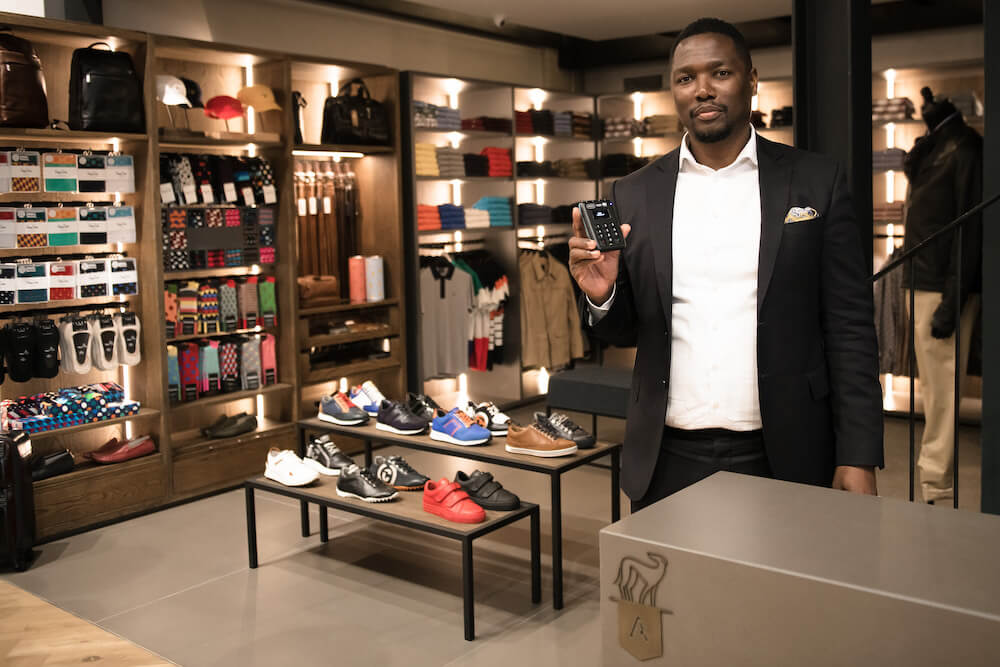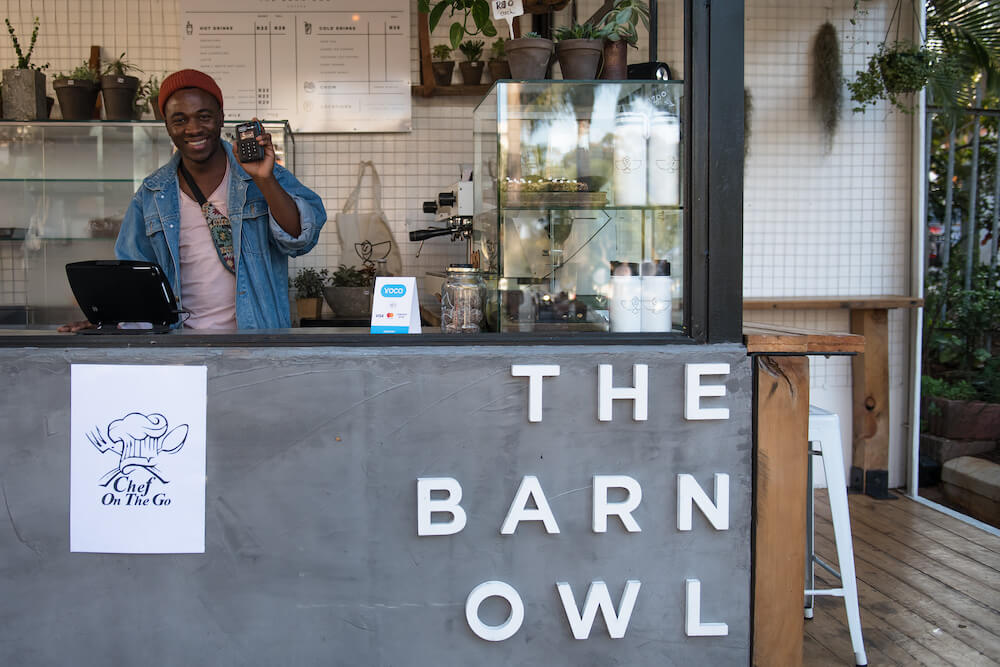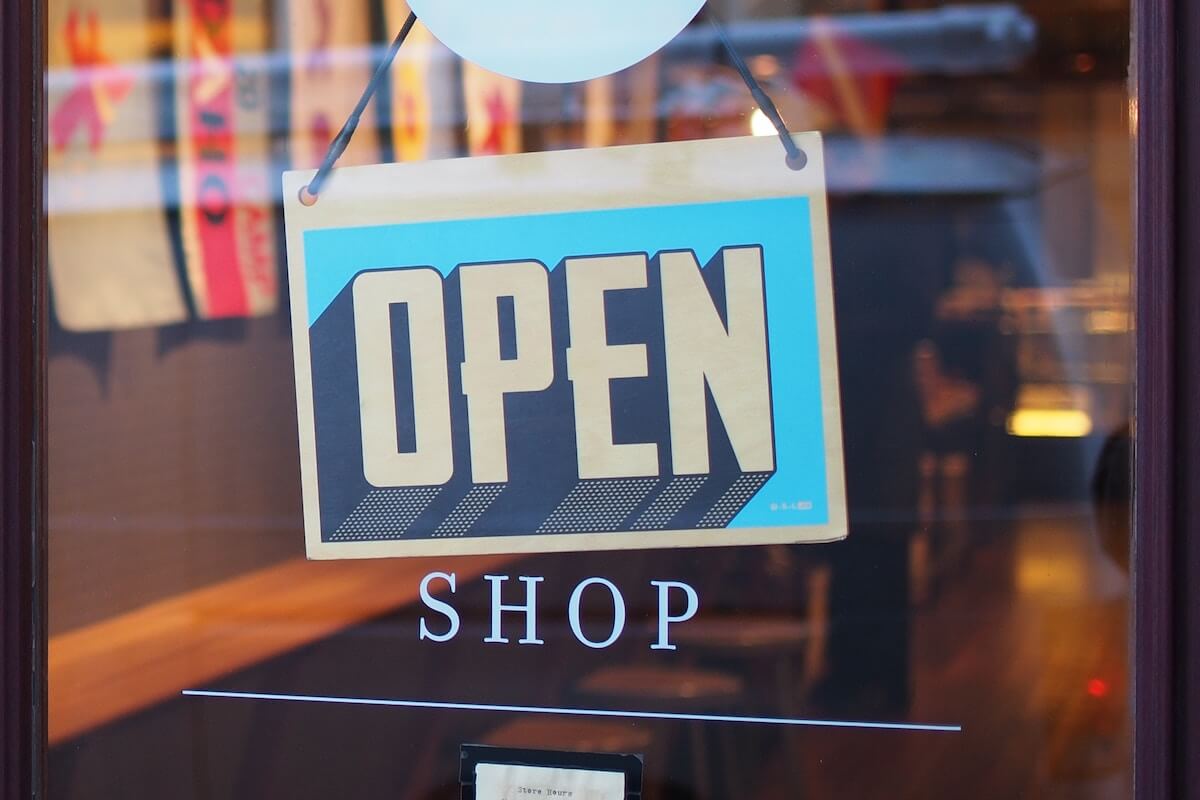So you’re passionate about your product, you’ve had success at a local market or selling online, and you’re thinking maybe it’s time to open a retail store. This may seem daunting, but research shows that in-store buying is being reinvented. With the explosion of online shopping, keeping the in-store experience fresh, relevant and dynamic becomes critical. So, we chatted to Maya Liepaz who helped launch Yoco’s Parkhurst store to share what we’ve learned from entering a rapidly evolving retail landscape.
Some homework
Hopefully, you already have some experience and information about your customers, so use it to update your business plan. Do some income and cost projections – at this stage, you’re making an educated guess. Assess startup costs and how much capital you may need to access. Next, scrutinise your target market: where do they live and work? Where do they shop for your type of product? What kind of prices do they pay? And, before you go any further, make sure your legal framework, business registration, and VAT admin are all in order.
The spot
Only search in areas that are hot spots for your target group, and where your product belongs: some experts recommend locating as close to your biggest competition as possible, thereby taking advantage of their efforts to attract your target demographic. If you’re less bold, look in areas with other compatible businesses, who also attract your customers, but for a different reason.
Decide on a size or type of store: from kiosks, to mobile trucks, shopping centres, strip malls and standalone premises, each have their own strengths and challenges. In general, your best entry point will depend on your business, how independently you want to operate, and how fast and big you’re hoping to grow. Maya warns to specifically watch out for restrictive management clauses when considering a mall or shopping centre.

Once you’ve identified a location, here are some things to think about:
Signage, zoning and council: Contact the local municipality to confirm the property’s zoning, find out about restrictions on the size and placement of signage, any plans for major roadworks or construction, and any possible restrictions already in the bureaucratic pipeline.
Lease terms and landlord: Watch out for how many costs will be billed on top of the advertised price. For example, who pays for maintenance or property taxes? Also, try to find out what the landlord is like to rent from, and chat to the previous tenants if possible. This relationship can make or break you.
Accessibility, visibility and traffic: The store needs to be accessible and visible to the right kind of people. How does your target demographic get to you? Will store visibility help cut costs on signage?
Parking and amenities: Every store needs adequate parking, access to bathrooms for customers and staff, plumbing and sufficient power supply. Even better, if you can get extra space for a staff break area, a kitchenette or added security features. “You have to think of little things like where your staff are going to warm up their lunch, so the smell doesn’t permeate the shop.” Maya says, “You have to make provision for every imaginable aspect of how the space will be used by all its occupants.”
Structural alterations: Will you need to incur the cost of making any serious physical changes to the building? Request an inspection with the Fire and Health Departments, so they can alert you to any concerns before you commit.
Whatever you do, don’t rush the decision and follow your gut!
In-Store
Once you’ve chosen your spot, it’s time to start mapping out exactly how things are going to look, feel and work inside the shop.
The experience: This is arguably the most crucial aspect of opening a shop. Try to imagine and provide for every possible aspect of how the customer will move around and interact with the space. People will also browse for longer when they feel physically comfortable and at ease. Some common considerations to get started are:
- Will you play music? You’ll need speakers and licenses.
- Keep things bright yet soft, with good lighting and climate control.
- Plan for crowds – think chairs, handrails and a queueing system.
- Display to enhance – shelving, signs, shelf-talkers and price tags must all make your products pop.
- Packaging – How will the customer take your product home? Can you make it special?
Management: Decide on your operating hours, and policies regarding every possible customer scenario you can imagine. How will you handle them? Run through a few hypothetical ideas: who would deal with the complaint? How should they respond?
Equipment: You’ll need to set up the shop with a few operational must-haves.
- A telephone and Wifi: for call-in customers and to connect your point of sale (POS)
- Cashbox and till – Also, what happens after hours? Will you need a safe? How far is the closest ATM?
- Smart phone, Tablet or Computer for POS (card machine)
- Bill Printer
- Label printer and bar-code scanner (if applicable)
- Baskets for customers
Business Tools: No matter how great your product or beautiful your space, you have to be able to facilitate transactions if you want to keep the doors open.
Payment Acceptance: Make sure that you can accept all forms of card payment, at a low rate with no hidden fees, and that your service provider can quickly process payments, while reliably making deposits into your bank account. Sign up to Yoco now to start accepting card payments.
Staff and HR: Hire people who will complete your customer experience, exude good energy and match the culture you want to create – the rest can be taught. Make sure you’re on top of the latest minimum wage requirements and labour law considerations, and invest in some legal assistance for drafting employment contract templates that you can use for years to come.
Security and insurance: These go hand-in-hand, because you need good security to get good insurance. So, make sure you have all the proper alarming and fencing systems, and investigate security cameras and extra lighting if you can afford it. Contact a few agencies to get competitive quotes to factor into your costs.

The opening
Maya encourages giving yourself (and your staff) a dress rehearsal: start with a soft opening, where the public aren’t alerted yet, but a few friends are invited to test-drive your store experience. It gives you a chance to spot teething issues, practice for the big day and get feedback from people who want to see you succeed – you need honesty, but now is also not the time to have your confidence dashed. The more time you can afford to take, the smoother the grand opening will be.
Finally, never officially open before the shop feels 100% ready – because even then, unexpected things will still go wrong. It’s far more important to make the best first impression possible, so make sure staff can answer any questions and handle all customers. Staff the store for crowds and good luck. Don’t forget to breathe!



